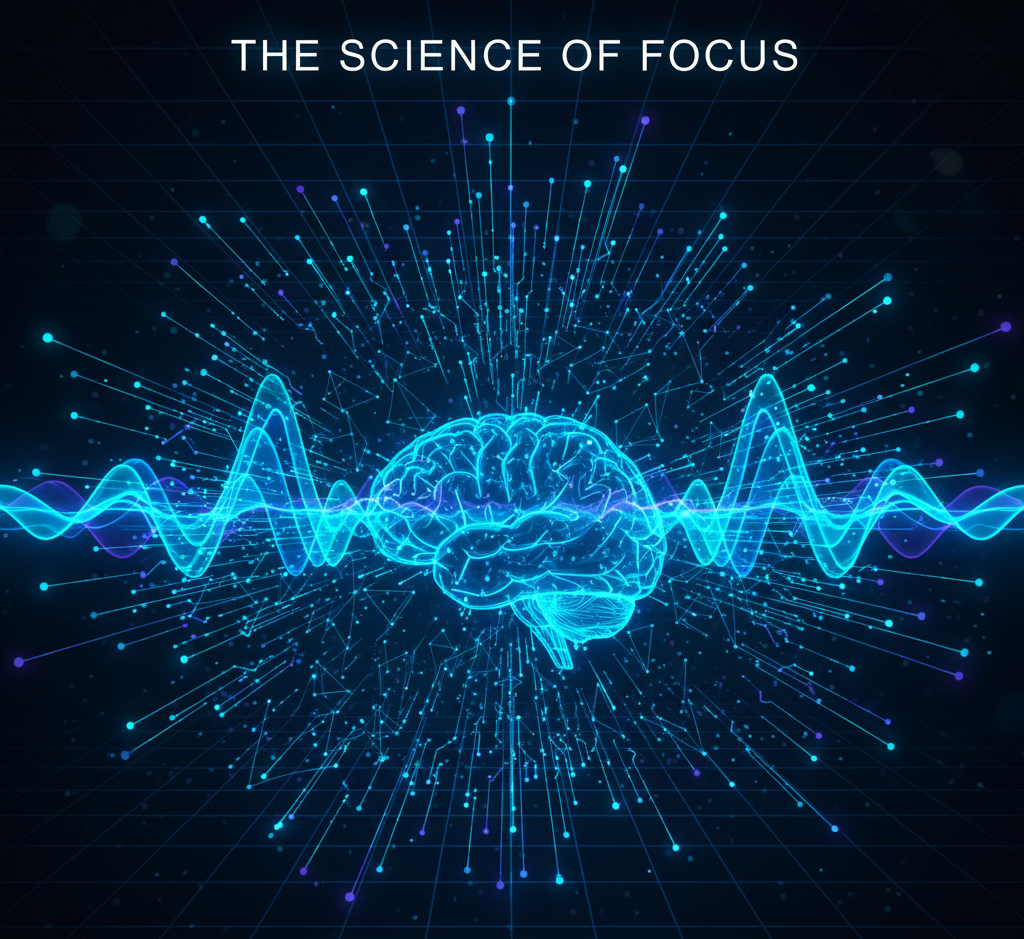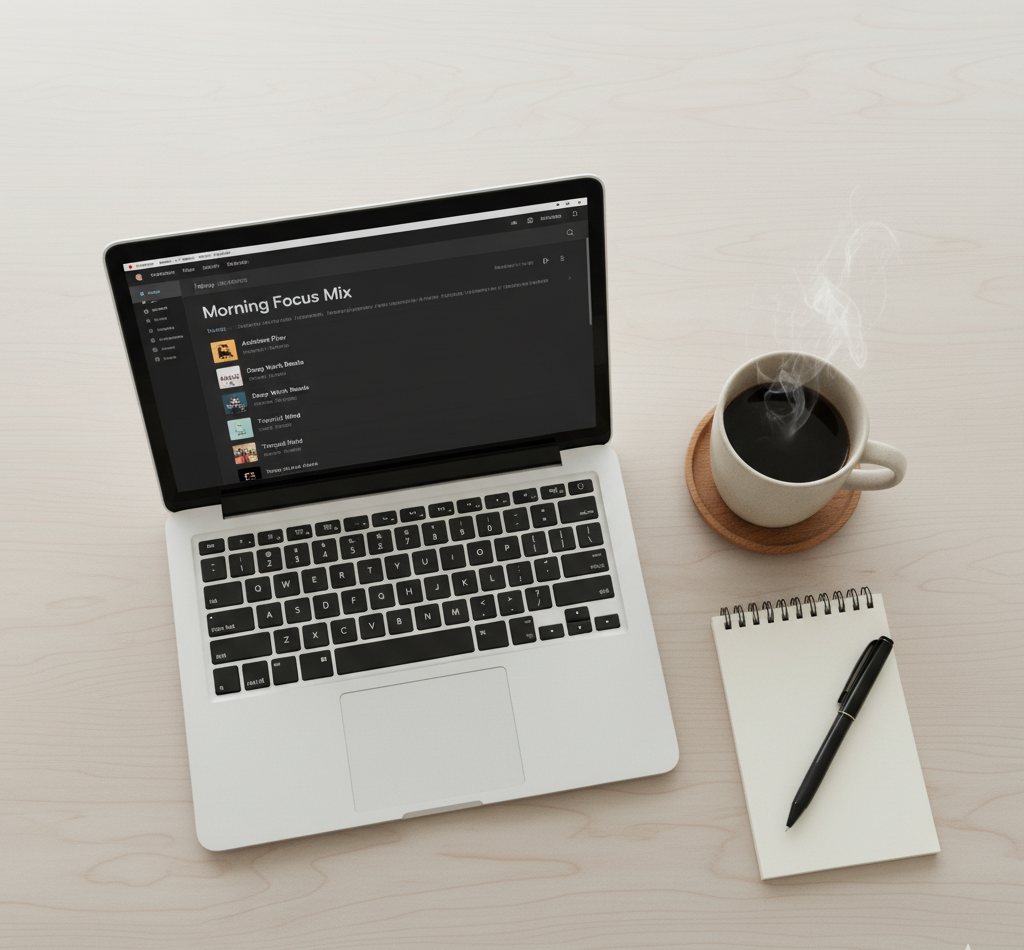Ever notice how some songs make you type faster, think sharper, or even feel calmer in the middle of chaos? Music isn’t just background noise—it’s a powerful tool for shaping your focus. The problem? Not all music works the same way, and finding the “right” playlist can feel like trial and error.
In my recent post, How I Built My Daily Digital Routine, I shared how structure creates calm in a noisy world. But routines are only part of the story. What we feed our brains while we work—especially sound—matters more than we think. Today, I want to show you how I use music scientifically to sharpen concentration and create flow. By the end, you’ll walk away with ideas you can experiment with (and maybe a playlist or two of your own).
Why Music Affects Your Brain (and Your Focus)
Music isn’t just something you hear—it’s something your brain processes. Studies show it influences neurotransmitters like dopamine and serotonin, which affect both mood and focus.
- Upbeat tempos can energize you during repetitive tasks.
- Steady rhythms help you sustain concentration in deep work.
- Instrumentals reduce distraction compared to lyrics (especially if you’re reading or writing).
Key takeaway: Music changes how your brain manages attention. Choosing the right soundscape isn’t about taste—it’s about function.
My Focus Playlist Formula

When I started experimenting, I realized there’s no one-size-fits-all playlist. Instead, I created a simple framework that I adjust depending on my energy and the task at hand.
1. Warm-Up (Transition into Focus)
This is where I use ambient or soft instrumental music. Think Brian Eno, Max Richter, or nature-inspired tracks. The goal isn’t excitement—it’s signaling to my brain: “We’re shifting gears now.”
2. Deep Work (Maintain Flow)
Once I’m in focus mode, I switch to repetitive, lyric-free music with steady beats. My go-tos include:
- Lo-fi hip hop (great for coding or writing drafts)
- Classical playlists (Mozart is cliché, but effective)
- Minimal techno or deep house (steady, no surprises)
3. Energy Boost (When I Start to Dip)
This is where science and fun collide. Research shows that moderate-intensity, upbeat tracks can temporarily boost dopamine. For me, that means a curated list of electronic, indie pop, or film scores.
Key takeaway: Match the playlist to your task and energy state, not just your personal music taste.
Science-Backed Genres That Help Focus
If you’re starting from scratch, here are a few genres researchers often point to:
- Lo-Fi Beats: Repetitive and relaxing, perfect for studying.
- Classical Music: Enhances memory and sustained attention.
- Nature Sounds: Great for stress reduction and background calm.
- Binaural Beats: Special frequencies shown to increase focus in some studies.
Are all of these guaranteed to work? No. But they give you a strong starting point.
How I Use Music Throughout My Routine
I anchor my playlists to moments in my daily digital routine.
- Morning planning: Ambient or acoustic tracks while journaling.
- Midday deep work: Lo-fi beats or classical for 2-hour focus blocks.
- Evening wind-down: Instrumental jazz or calm piano while closing the day.
This rhythm keeps me from relying on caffeine alone for energy shifts. It also makes my routine feel designed instead of reactive.
Tips for Building Your Own Focus Playlist

If you want to create your own science-backed playlist, here are a few tips that helped me:
- Avoid lyrics when doing language-heavy work (writing, reading, editing).
- Experiment with tempo—faster isn’t always better; sometimes slower keeps you steady.
- Use short playlists (30–60 minutes) to align with natural focus cycles.
- Save energizing tracks for breaks or transitions, not deep work.
- Test, adjust, repeat—what works for me may not work for you.
Key takeaway: Think of your playlist as a tool, not entertainment.
Conclusion
Music is more than background—it’s a design choice for your focus. The science shows that sound influences attention, energy, and even creativity. My playlist isn’t perfect, but it helps me shift gears, stay steady, and recharge when needed.
If you’ve ever felt like your mind wanders too easily, ask yourself: what soundtrack is shaping your day?
Start simple. Pick one playlist for focus and one for winding down. Experiment this week, and notice how your energy changes.
And if you’re building out your own digital routine, you might enjoy my earlier post, How I Built My Daily Digital Routine. Pairing structure with sound could be the missing link to more flow in your day.





